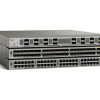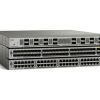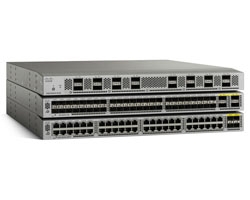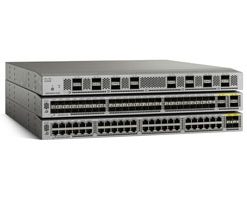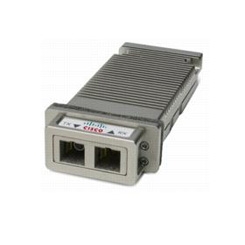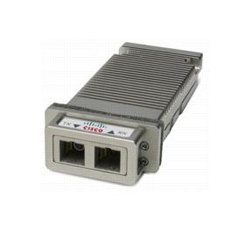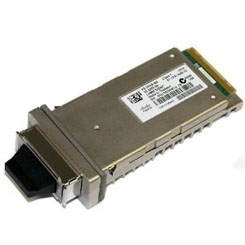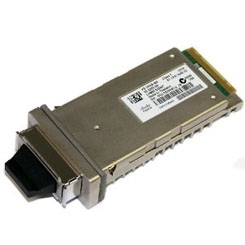N2K-C2348UPQ8F: Cisco Nexus 2348UPQ 10GE Fabric Extender, 2PS, 3 Fan Module, 48×1/10GE (req SFP/SFP+) + 6x40G QSFP+(req QSFP+), choice of airflow and power supply includes 4/8/12 x Fabric extender transceivers (FET 10G-FET 40G) or QSFP-Bidi
N2K-C2348UPQ8F: Cisco Nexus 2348UPQ 10GE Fabric Extender, 2PS, 3 Fan Module, 48×1/10GE (req SFP/SFP+) + 6x40G QSFP+(req QSFP+), choice of airflow and power supply includes 4/8/12 x Fabric extender transceivers (FET 10G-FET 40G) or QSFP-Bidi
The Cisco Nexus 2300 platform maintains all the existing Nexus 2000 features including single point of management, high availability with virtual port channels (VPC), VPC+, Enhanced VPC, and LAN/SAN convergence using Fiber Channel over Ethernet (FCoE). The Cisco Nexus 2300 platform is suitable for highly virtualized, automated, and cloud environments, with the addition of true 40 Gigabit Ethernet support, deep buffers to handle bursts of traffic common in today’s data center, and unified port capability.
The Cisco Nexus® 2300 Fabric Extender is a 1RU energy efficient platform with a choice of front-to-back (port-side exhaust) and back-to-front (port-side intake) airflow options that offer, 100 Megabit Ethernet, 1/10/40 Gigabit Ethernet, Fiber Channel ῖand Fiber Channel over Ethernet (FCoE), for a broad range of traditional data center and large-scale virtualized cloud deployments.
The Cisco Nexus 2348UPQ Fabric Extender (Figure 2) is a general-purpose unified port ῖ -capable 100 Megabitῖ. 1/10 Gigabit Ethernet fabric extender for workloads such as large-volume databases, distributed storage, and video editing. The Cisco Nexus 2348UPQ supports 48 1/10G host unified ports as well up to 6 *40Gb uplink ports towards the parent switch. The 40G uplinks support BiDi Optics for simple connectivity using your existing cable plan. The unified ports provide connectivity to 2-/4-/8-/16-Gbps fiber channel ῖ (24 ports for 16G) as well as 1/10 Gigabit Ethernet and FCoE connectivity options.
The Nexus 2348UPQ has a deep 32-MB shared buffer that helps increase performance, and it supports FCoE and Data Center Bridging (DCB) network technologies that boost the reliability, efficiency, and scalability of Ethernet networks. These features allow support for multiple traffic classes over a lossless Ethernet fabric, enabling consolidation of LAN, storage area network (SAN), and cluster environments.
N2K-C2348UPQ8F
GUARANTEED to Exceed Expectations.
When purchasing from AMNET Global, rest assured that your information technology equipment is covered for a lifetime. When you receive your order, your unit is already covered by our Lifetime Warranty and Advance Replacement.
Coverage That Never Ends.
In the event of a product malfunction, we fully understand that downtime is not an option. If you experience a product malfunction or failure, we will send you a replacement the same day, fully expedited and at our cost.
Please see our full Terms and Conditions of Warranty here.
QUESTIONS ABOUT THIS PRODUCT OR AVAILABILITY?
You have come to the right place!
If you have an immediate question, please click here and we will be glad to speak with you right away!
To speak to one of our technicians about this product, please call our technical support team at 1.888.428.6677 Option 3 and we will get you taken care of right away!


